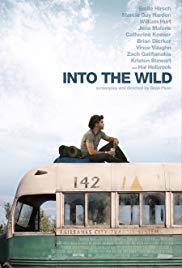TAKING CARE OF YOURSELF
See Discussion Questions 2 and 3 above.
FAMILIES IN CRISIS
1. Carine used crystal shattering as a metaphor in regards to her brother’s reaction to their parents. Is this metaphor a good description of McCandless’ personality? Can you think of a better one?
Suggested Response:
The crystal shattering metaphor is strong in that crystal is valuable and liable to shatter. It gives a good description of McCandless’ personality before he had his epiphany in the woods, just before he died. It is also a good metaphor in that one does have to take care in handling crystal, just as one has to take care in raising a child. The deficiency in the metaphor can be described in several ways. Crystal is inert and Chris McCandless was a living being. Objects made of crystal are not actors in the world, but human beings, Chris McCandless included, are actors in the world. Crystal is never responsible for it being dropped and shattering. Chris McCandless overreacted to his parents’ deficiencies and in that overreaction became partially responsible for what happened to him, to Carine, and to his parents when his risky behavior led to his death.
2. How does McCandless finally come to understand the value of family?
Suggested Response:
There is no one correct answer to this question; there are only strong and weak answers depending upon the logic used and the evidence marshaled to support the response. Here are a few ideas. One strong response is that McCandless matured in his several months in the wild. This is supported by the notes and underlines that he left behind and by his final picture. Another is that being alone for so long helped McCandless realize the importance of people. A third is that the cumulative effect of the suggestions of the people McCandless met on the way, many of whom challenged his decision to cut off his family, finally had an effect on him, and he understood the pain he was causing his parents and his sister. A fourth idea is that McCandless learned from the books he read. And, of course, it was probably all or several of these factors combined.
3. Do you agree with the statement that McCandless’ family situation was a minor influence in McCandless’ decision to go into the wild? Justify your answer.
Suggested Response:
There is no one correct answer to this question; there are only strong and weak answers depending upon the logic used and the evidence marshaled to support the response. A strong argument is that McCandless’ family situation was a major factor in his decision to undertake the risk of going into the wild in the way that he did. Many people love the wild, and they love the challenges that it presents. However, they don’t put themselves in the risky positions that McCandless did. Not only was the trip to Alaska risky, but McCandless’ trip down the Colorado River was also risky. He just had better luck that time. A strong counter-argument can also be made: many people do foolhardy things and still survive.
4. Do you agree with the statement that in remaining incommunicado, McCandless was unnecessarily cruel to his family? Justify your answer.
Suggested Response:
Clearly, McCandless was unnecessarily cruel to his sister. As to his parents, there is no one correct answer to this question; there are only strong and weak answers depending upon the logic used and the evidence marshaled to support the response. For example, McCandless quotes a poem in which the author mentions banging people together like paper dolls. A strong response will mention this simile and explain it in the context of McCandless’ life.
5. Should McCandless have forgiven his parents?
Suggested Response:
There is no one correct answer to this question; there are only strong and weak answers depending upon the logic used and the evidence marshaled to support the response. The strongest response is that he should have, but he needed time and maturity for this. Unfortunately, his efforts to find that in the wild caused his death and we’ll never know if he would have taken this additional step.
FRIENDSHIP
6. Many of the people that McCandless met along the way wanted to take care of him almost as if he were a member of their family. Jan wanted to mother him, Westerman wanted to father him, Franz wanted to grandfather him, and the man who gave him the boots was concerned about his safety. What about McCandless’ personality made them respond to him in this way?
Suggested Response:
The answer is that in many ways McCandless was obviously a hurt child. Many people respond to hurt children by trying to take care of them.


